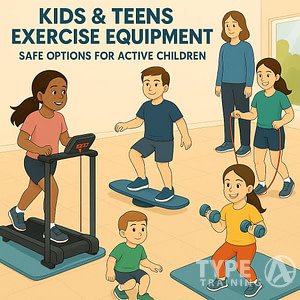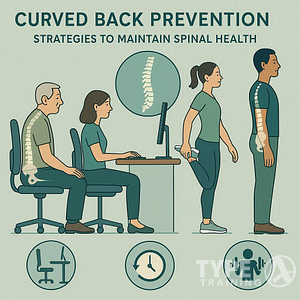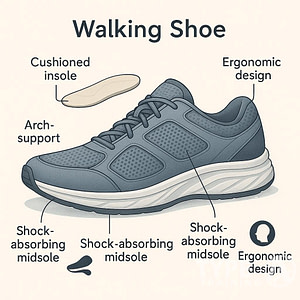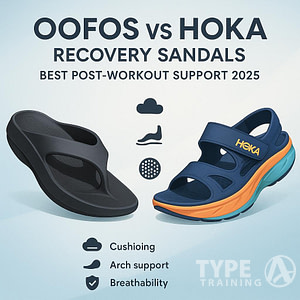Cardiovascular exercise plays a crucial role in your workout routine as it helps burn calories, manage weight, and reduce the risk of heart disease. There are countless cardio activities available, and selecting the right one boils down to personal preferences. Some individuals enjoy going for a run, while others might prefer an equipment-based workout such as jumping rope.
Both running and jumping rope come with their respective advantages and disadvantages. To identify the best option for your fitness and lifestyle needs, it’s essential to consider the potential rewards and drawbacks of these two aerobic exercises. This article will assist you in understanding the differences between jumping rope and running, allowing you to make an informed choice.
Pros/Cons of Running
Advantages of Running
Running offers several health benefits and is a convenient activity that can be done almost anywhere. Here are a few advantages to consider:
- No equipment required: The most significant investment for running is a good pair of athletic
shoes . Choose lightweightshoes with minimal heel-to-toe drop for the best results. - Flexibility: Running can be done almost anywhere, making it an excellent option for those who travel often. Exploring new cities by running can also provide unique experiences.
- Reduced disease risk: Studies have shown that running even 5-10 minutes per day at slow speeds can significantly reduce the risk of death and cardiovascular disease.
Potential Drawbacks of Running
Despite its many benefits, running may not be suitable for everyone due to its impact on joints and its repetitious nature. Here are some potential issues to be aware of:
Popular posts:
- Joint damage: Running can cause injuries to weight-bearing joints, such as knees and hips. If you experience any joint pain, you may want to avoid running altogether.
- Repetitive: For individuals who require variety in their workouts to stay motivated, running might not be the best choice. The repetitive nature can lead to boredom, burnout, and a higher risk of injury.
Pros and Cons of Jumping Rope
Pros of Jumping Rope
Jumping rope engages multiple muscle groups, including your calves, quadriceps, glutes, hamstrings, obliques, abs, biceps, triceps, back, chest, and shoulders. Here are some benefits of incorporating this versatile exercise into your fitness routine:
- Enhanced balance and coordination: Jumping rope is a great way to develop balance and coordination skills. In a study involving young soccer players, including jumping rope exercises in their training led to improved motor coordination and balance as well as faster cardiovascular performance.
- Effective fat burning: Jumping rope is an efficient way to burn fat in a relatively short period. A study examining the effects of a 12-week jump rope program showed participants reduced body fat, had better body composition, and decreased risk of developing cardiovascular diseases.
- Highly accessible: Jumping rope is an easily accessible exercise, requiring only one piece of equipment that you can take with you when traveling. You can do it on a sidewalk, at home, or in a gym, as long as you have a hard floor or surface.
Potential Drawbacks of Jumping Rope
Despite its benefits, jumping rope might not be suitable for everyone, especially if you have joint issues or knee pain. Consider these potential drawbacks before starting a jump rope routine:
- Space requirements: You need an adequate amount of space to jump rope. If you live in a multi-story building, your jumping may disturb those living below you. Also, ensure that the surface is suitable for safely swinging the rope and avoiding floor damage.
- Impact on knees: Similar to running, jumping rope involves repetitive movements that could cause stress on your knees over time, especially when done on hard surfaces like concrete. If you are concerned about your joint health or have a history of knee problems, consider alternative low-impact exercises.
How They Compare
Managing Weight
In terms of weight management, both running and jumping rope have similar calorie-burning potential. They quickly increase your heart rate and contribute to building endurance. For example, a 155-pound person can burn approximately 421 calories by jumping rope quickly for 30 minutes, while the same person can burn around 450 calories running at an 8-minute-per-mile pace for the same duration.
Ease of Access
Running and jumping rope rank high in accessibility among cardio exercises. No equipment is needed for running, and the only gear required for jumping rope is the rope itself. Both running
Targeted Muscle Groups
The key difference lies in the muscle groups each activity engages. Jumping rope involves using your arms, leading to a better workout for your upper body muscles compared to running. On the other hand, running stimulates more leg muscle groups. To achieve a comprehensive workout targeting a variety of muscles, consider alternating between these two exercises.
What Is Best For You?
Take into account your personal health history and preferences when deciding between running and jumping rope. Mixing both exercises can be effective as well – try interval training with sprints and jump rope one day, and dedicate another day to a long run.
Both activities have their merits, and incorporating them into your routine can contribute to the American Heart Association’s recommended 150 minutes of moderate-intensity exercise per week. Remember to focus on health benefits, maintain proper form, and consider the impact on your body fat and overall body composition.
A Word from Type A Training
Running and jumping rope share similarities in terms of calorie burning, equipment requirements, and accessibility, making them both excellent choices for improving your overall health. These exercises not only impact your physical well-being but also contribute to better mental health, and they can help to lower the risk of cardiovascular diseases.
However, if you are new to exercising or have chronic medical conditions or joint issues, it’s crucial to consult with a healthcare provider before starting any exercise routine. They can guide you in choosing the best exercise for your needs or recommend alternative exercises, such as walking.
Frequently Asked Questions
- How long should you jump rope?The U.S. Department of Health and Human Services’ Physical Activity Guidelines suggest adults engage in 150 to 300 minutes of moderate-intensity exercise or 75 to 150 minutes of vigorous-intensity exercise per week, preferably spread throughout the week. This means, for example, you could aim for a 30-minute moderately intense jump rope session five times a week to meet these recommendations.
- Is jumping rope as effective as running?Jumping rope offers similar benefits to running when considering factors such as calories burned, joint impact, endurance building, and accessibility. Both exercises burn approximately the same number of calories per hour and require minimal equipment, making them suitable for almost any location.
Remember, adhering to a workout program is essential for reaping the benefits of running or jumping rope. When performing these exercises, you’ll be working toward improved heart health, mental health, and overall longevity while simultaneously decreasing the risk of cardiovascular disease. So, consult with experts and choose the exercise that works best for you and your health goals.
Frequently Asked Questions
How do running and jumping rope affect your knees?
Both running and jumping rope can affect your knee joints, but jumping rope is considered to be easier on your joints if done with proper form. Running, especially on hard surfaces, can put more stress on your knees.
Which activity helps you burn more calories: jumping rope or running?
The number of calories burned during either activity ultimately depends on your intensity and duration. Both running and jumping rope are effective for burning calories. However, jumping rope can burn more calories in a shorter amount of time when compared to running at a moderate pace.
Comparing the intensity of jump roping and running
Jump rope intensity can be easily adjusted by increasing or decreasing the speed of your jumps or the complexity of your movements. Running intensity can also be adjusted by altering your speed and terrain. Both activities offer aerobic and anaerobic exercise options, but jumping rope may allow for a higher intensity workout within a shorter time frame.
Is jump roping more effective for weight loss compared to running?
Both jump roping and running can contribute to weight loss when combined with a balanced diet and consistent exercise routine. Jump roping may provide a more efficient workout due to its ability to burn more calories in less time. However, the most effective activity for weight loss ultimately depends on personal preference and consistency.
Which is better for cardiovascular health: running or jump roping?
Both running and jumping rope provide excellent cardiovascular workouts. They improve heart and lung health, as well as overall endurance. The choice between the two largely depends on your personal preferences, available space, and fitness goals. Both activities have distinct advantages when it comes to cardiovascular fitness.
Can jump roping improve your running performance?
Yes, jumping rope can improve your running performance by increasing cardiovascular endurance, strengthening leg muscles, and enhancing coordination. Incorporating jump rope exercises in your routine can provide cross-training benefits that complement your running workouts and help prevent injuries.








